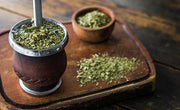What is Ceylon tea? Is Ceylon black tea?

During the 1800s, under British rule, tea plants were smuggled from China onto a small tropical island known as Ceylon. The name was used to identify the tea cultivated there. In 1972 they changed the name to Sri Lanka.
Tea produced in Sri Lanka began with only a few plantations. Today Sri Lanka is one of the largest producers in the world. The plants are grown and produced in seven unique regions providing unique characteristics. The Ceylon region accounts for nearly 20% of the tea in the world.
Is Ceylon tea black?
You may think that Ceylon tea is black tea. In addition to Ceylon black tea, Sri Lanka also produces other varieties, including green, white, and oolong. However the black variety is the most widely known.

What does Ceylon black tea taste like?
Ceylon has notes of citrus and spice, and is delicious enjoyed on its own or with a splash of milk and honey.
The Ceylon regions provide large variations of elevation, soil type, and weather that affect the flavor.
Black Ceylon is a fully-fermented leaf. This provides notes of citrus, spice, and even chocolate. Overall, the flavor of Ceylon black is full-bodied and bold. Oolong Ceylon has a fresh and mild flavor with a distinctive aroma and orange tint.
Less processed green Ceylon retains the freshness of the leaf and tends to have a nutty flavor. White Ceylon tea tastes light and sweet.
Black Ceylon makes delicious blends expressing unique flavors such as:
- Mango Black: a subtle flavor of a perfectly ripened mango with a juicy texture
- Irish Breakfast: a blend of two full-bodied loose leaf black teas — Ceylon with the citrus notes and Assam with the malty underscore
- Ginger Peach: soft warmth of ginger, sweet ripe peaches and apricots
- Raspberry Black: a blend of sweetly tart and jammy raspberries with balanced astringency, and sweet, slightly dry finish.

How is Ceylon tea made?
Because Ceylon refers to the region, the processing method depends on the variety.
Black Ceylon
Black Ceylon is made from both the stems and the leaves of the plant. The leaves are allowed to fully ferment which reduces the antioxidant content, but creates a full-bodied flavor. Fermented leaves does not always mean black tea is acidic.
Green Ceylon
As with other green teas, green Ceylon leaves are picked fresh and only allowed to partially ferment. The shortened fermentation period allows the green leaves to retain much of their antioxidant properties.
Oolong Ceylon
Oolong falls between the green and black varieties. The leaves are partially fermented and oxidized, giving it characteristics of both. Oolong goes through much more involved processing which includes withering, tossing, oxidizing, fixing, rolling, drying, and firing.
White Ceylon
These leaves have a shorter harvest season and are carefully hand-picked. As the least processed of the varieties, the leaves are left to dry in the sun providing a high level of antioxidants. Because they are hand-picked, rare white Ceylon tend to be more expensive than the others.
Does Ceylon black tea have caffeine?
Yes, black Ceylon tea contains caffeine similar to other black tea. However compared to a cup of coffee, it has about half as much caffeine.
The caffeine in Ceylon black tea is the highest with 47–90 mg. Green and white tea from Ceylon follow with 30–70 mg and 6–55 mg respectively.
Similar to other highly-caffeinated drinks, large quantities of black Ceylon may cause side effects in certain people. If you drink several cups during the day, try switching to another variety. This can help reduce your caffeine intake.
How to brew Ceylon tea
To prepare Ceylon tea, follow these steps for the best flavor:
1. Start by heating fresh, filtered water to the ideal temperature of 200°F (93°C).
2. Add about 1 teaspoon of tea leaves per 8 ounces of water into your infuser, basket, or compostable tea bag.
3. Pour the hot water over the leaves. Allow it to steep for 3-5 minutes. A shorter steeping time will yield a milder flavor, while a longer steeping time will produce a stronger brew.
4. Add a splash of milk and honey, or lemon to your preference. Black Ceylon is also often enjoyed over ice.
Ceylon tea benefits
Like other black varieties, black Ceylon has several beneficial properties. These include:
- Aids in digestion: May positively influence digestive health and may help alleviate stomach issues.
- Boosts antioxidant levels: This may help fight cell damage and protect us from chronic diseases.
- Enhances vitality: Caffeine can aid in increasing energy levels and attentiveness.
- Anti-inflammatory properties: Can aid in alleviating symptoms of inflammation.
Now that you know more about Ceylon tea, find a rich blend for yourself. Enjoy a cup of Ceylon and all its flavor and health benefits.





